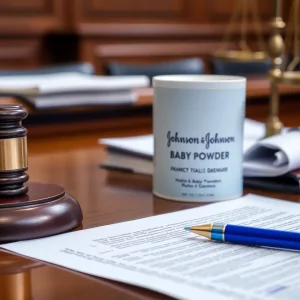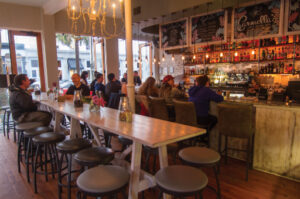Heartbreak in Charleston: Historic Building Collapses During Construction
Charleston, S.C. – Over the weekend, downtown Charleston witnessed a tragic event that has left many residents mourning the loss of a piece of their history. A historic building, once a treasured freedman’s cottage dating back to the late 19th century, collapsed while under construction, prompting an investigation by the Board of Architectural Review (BAR) for what appears to be an unpermitted demolition.
A Unique Corner of History
The cottage, which had stood in disrepair for about 60 years, boasted a distinct half-hipped roof form, making it one of the few remaining structures of its kind in Charleston. Anna-Catherine Alexander, the director of advocacy incentives with the Preservation Society of Charleston, expressed her grief, saying, “The loss of this building is heartbreaking. It’s tragic and it could have been prevented.” Her sentiment resonated with many residents who appreciate Charleston’s rich architectural landscape.
Developer’s Take
The developer involved in the project, Zachery Highfield of the Premium Property Group, extended his apologies in a letter addressed to deputy building official Gary Pope. In this letter, Highfield lamented the event, acknowledging their deep sadness while stressing their efforts to maintain the building’s integrity. But, he also pointed out that the cottage had suffered from “significant damage” due to flooding, termites, and even fire.
A Community Reacts
Catherine Yetman, a Charleston resident who has lived nearby for over a decade, was taken aback by the suddenness of the collapse. “I was shocked but mostly thankful that no one had been walking on the sidewalk at the time,” she remarked. “It survived two tropical storms, it survived Milton, and it just couldn’t survive a random sunny day.” Her reaction was shared by others, reflecting a community spirit that values both safety and heritage.
Debates and Discussions
Highfield’s team had plans in place to elevate the structure by six feet, but the exact cause of the collapse remains unclear. Alexander pointed out a troubling trend among developers who seek to demolish historic buildings without the necessary approvals. “When demolition occurs, without proper review and approval, we lose the chance to preserve the integrity of these buildings and the stories that they have the ability to tell,” she explained.
Looking Ahead
The BAR is expected to consider denying any after-the-fact requests for demolition, which could lead to a fine of up to $1,087—Charleston’s maximum penalty for any municipal offense. In the past, a similar case at 194 Nassau Street resulted in an $800 fine after a request was denied. The stakes are high, as developers are aware that penalties could jeopardize their businesses, as noted by Highfield in his letter.
Preservation Efforts
As the city moves forward, the Preservation Society is advocating for stricter enforcement of existing ordinances. Alexander mentioned ongoing conversations with city officials to bolster staff capacity to monitor and protect the city’s historic buildings. “The more capacity that staff has to be the eyes and the ears of the citizens of the city to ensure that this type of activity does not occur and does not cause harm to our historic buildings and neighborhoods, the better,” she stated.
Final Thoughts
The collapse of this historic freedman’s cottage is not just about the loss of brick and mortar; it’s about losing a part of Charleston’s vibrant history. As the community grapples with this loss, it highlights the importance of preservation and the need for respectful development that honors the past. The future of Charleston’s historic homes depends on the actions taken today and the continued efforts of its devoted citizens.



























